#takla makan
Explore tagged Tumblr posts
Text
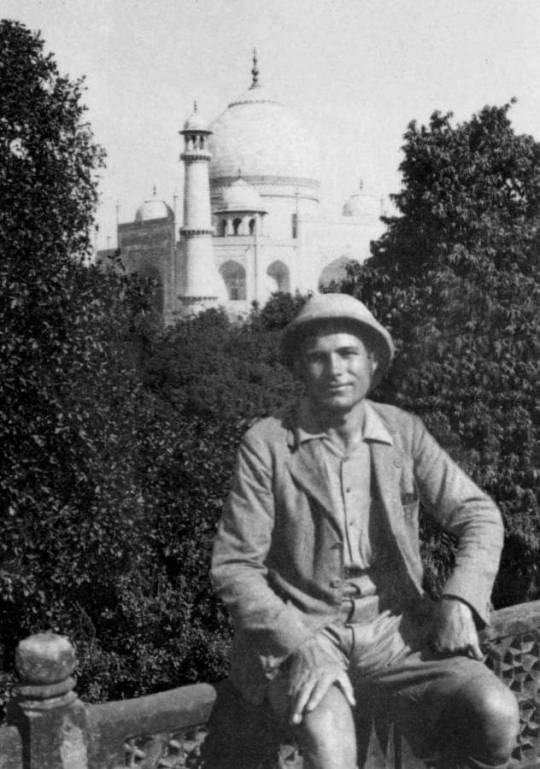
Antanas Poška (1903-1992) – Lithuanian traveler, scientist, anthropologist, writer, journalist, Calcutta University honorary doctorate (2014).
1931-1933: At the University of Bombay, Antanas Poška studied anthropology and acquired knowledge of Sanskrit.There, he met the famous Indian (Persian) researcher Jivanji Jamshedji Modi. He accompanied Oxford University professor Aurelius Stein on an expedition to Chinese Turkestan. In 1933, he received a diploma from the University of Bombay for the work "The Aryans, their origin and migrations". Later (in 1934), he participated in an expedition to Baltistan and visited Nepal. Prepared a dissertation. 1933-1936 participated in anthropological expeditions around Southeast Asia, collected data on the Chinese-speaking peoples in the northwest of the Himalayas, visited Burma, the Takla Makan desert, and the Andaman and Nicobar Islands. In Benares, with the help of local pandits, Antanas Poška deepened his knowledge of Sanskrit and prepared a translation of the Bhagavadgita.
In 1937, he traveled to Afghanistan, Iran, Iraq, and Turkish Kurdistan. In Turkey, Poška was arrested, suspected of being a British spy, imprisoned, and his collected material and translations disappeared.
In 1937, he returned to Lithuania.
In 1945, June 28, he was arrested, imprisoned in the Arkhangelsk region and Komi camps. He worked as a paramedic in Kazakhstan. 1949-1958, he worked in Central Asian local history museums (Petropavlovsk, Osh, Andijan), participated in expeditions. In 1958, September 18, the Criminal Cases Panel of the LTSR AT closed the case of A. Poška, and the traveller returned to Lithuania in 1958. 1960-1969, he led the Lithuanian Esperanto club.
In 1960, with Prof. Tadas Ivanauskas, he travelled to the nature reserve "Tigrų Balka" [idk how to translate it] in Tajikistan. 1965-1966, he hitchhiked to the Esperantists of Leningrad and Moldavia. In 1972, he travelled by motorcycle to the republics of the Caucasus and Transcaucasia. In 1973, he visited the place of exile in Komi, 1976 - Kyrgyzstan.
In the last decade of his life, he managed his rich archive, prepared his books for the press, but the soviet censorship did not let them pass. 1987-1988, he visited Czechoslovakia. In the 1980s, his health deteriorated, and he died in 1992 after a long, serious illness.
4 notes
·
View notes
Text





27) Podoces biddulphi; Sójeczka białosterna, Xinjiang ground jay (Sójka ziemna z Xinjiang), Biddulph's ground jay (Sójka ziemna Biddulpha) - gatunek średniej wielkości ptaka z rodziny krukowatych (Corvidae). Występuje endemicznie w północno-zachodnich Chinach. Bliski zagrożenia.
Po raz pierwszy gatunek opisał Allan O. Hume; opis ukazał się w 1874 na łamach „Stray Feathers”. Holotyp pochodził z Maralbashi (chiń. Bachu, ujg. Maralbeshi). Autor nadał sójeczce białosternej nazwę Podoces biddulphi; nazwa ta jest obecnie (2020) podtrzymywana przez Międzynarodowy Komitet Ornitologiczny. Sójeczka białosterna tworzy nadgatunek z mongolską (P. hendersoni), niekiedy są wydzielane razem do rodzaju Eupodoces ze względu na obecność czerni na wierzchu głowy, stosunkowo długie pokrywy nadogonowe, brak czarnej plamki na piersi, a także różnice w wokalizacji. Gatunek monotypowy. Endemit północno-zachodnich Chin. Występuje na pustyni Takla Makan w Sinciangu, od Jarkend na wschód po Lob-nor. Środowiskiem życia tych ptaków są piaszczyste pustynie z krzewami i niskimi drzewami, w tym topolami. Zwykle sójeczki białosterne przebywają w parach lub grupach rodzinnych. Są ostrożne i skryte. Poruszają się po ziemi charakterystycznym dla krukowatych kaczkowatym chodem, zamiast skakać. Żerują poprzez kopanie w piasku swoim długim dziobem; w żołądkach znajdowano owady i ziarno, prawdopodobnie pochodzące z odchodów dużych ssaków.
IUCN uznaje sójeczkę białosterną za gatunek bliski zagrożenia (NT, Near Threatened) od 2000 roku (stan w 2021); wcześniej, od 1994 roku klasyfikowano ją jako gatunek narażony (VU, Vulnerable). Zagrożeniem dla gatunku jest fragmentacja i niszczenie środowiska wskutek wypasu kóz i wielbłądów, wydobycia ropy naftowej, wycinki drzew i przekształcania pustyni w nawadniane pola.
0 notes
Link
0 notes
Text
Neige vaudou - ALENVERS - 2023 - Ed. L'harmattan
Quatrième de couverture Pour une sombre histoire de vengeance, une jeune française, Mila, est pourchassée par un assassin cannibale et déjanté, Toussaint, porte-flingue d’un mafieux serbe. La course poursuite sanglante nous entraîne à travers les montagnes Sacrées du Kirghizistan, le désert de Takla-Makan et les Grottes aux « Mille Bouddhas » en Chine. Un polar world truffé de rebondissements,…

View On WordPress
#Chine#coursepoursuite#France#instalire#kirghizistan#leeham#leschroniquesdeleeham#littérature#mafia#polar#policier#romannoir#romans#serbie#suspens#thriller#tueur
0 notes
Text
5. Lop Nur (Lake Nur)
Based on Britannica (2023). In the desolate expanse of northwestern China lies the Lop Nur, once a flourishing Salt Lake that is now nothing more than a vast salt-encrusted bed. Nestled in the Tarim Basin in the eastern Takla Makan Desert, it is one of China's most barren and unforgiving landscapes. In the 1950s, the Lop Nur covered an area of about 2,000 square kilometers and disappeared around 1970 when the irrigation projects and reservoirs along the Tarim River, one of its former tributaries, were completed. Despite the harsh and dry climate, carbon-14 dating indicates that a lake of varying sizes characterized the area for about 20,000 years before its disappearance. Since then, the region has suffered from increasing wind erosion and salt encrustation, so today, the salt crust covers 8,000 square miles (21,000 square kilometers), and yardang formations dominate nearly 1,200 square miles (3,100 square kilometers). Since the early 1920s, when Uighur groups fled due to a devastating plague, Lop Nur has remained uninhabited except for a few wild Bactrian (two-humped) camels. Between 1964 and 1996, the site was used temporarily as a testing ground for Chinese nuclear experiments, a stark testament to humanity's intrusion into this desolate landscape. According to Huntington (1907), Marco Polo ventured into the desert of Lop Nur and encountered the treacherous sands and eerie illusions spun by malevolent spirits. After a grueling thirty-day journey to the northeast, he and his companions reached the city of Lop on the shores of the lake, which lies on the edge of the terrifying Gobi Desert. After careful preparations, we set off on the perilous journey across the vast expanse, relying on the desert's sparse watercourses to sustain us on our arduous journey.

1 note
·
View note
Text
China shows some big guns after the Brits,Japanese and Indians try to show off against it,looks like they have to be reminded that the steel torrent is unstoppable
The post is machine translated
Translation is at the bottom
The collective is on telegram

🚀 Così come è avvenuto ieri, anche oggi - 12 gennaio - si terranno Test Missilistici tra le 05:15 - 07:05 e le 11:50 - 13:40 (Ora di Mosca), presso il Sito Missilistico di Jilantai, nella Regione Autonoma della Mongolia Interna 💥
🚀 Proprio come ieri, si prevede di lanciare Missili Balistici a Medio Raggio, probabilmente il DF-21, in direzione el Deserto di Takla Makan, nella regione dello Xinjiang, per una portata stimata di circa 1950km 📊
Per chi volesse approfondire, può rifarsi a:
🔺Test Missilistico dell'11 Gennaio - Sito di Wuzhai | DF-21 💥
🔺Test Missilistico del 26 Settembre - Sito di Wuzhai | DF-21C 💥
🔺L'Esercito Popolare di Liberazione espande il Sito Missilistico di Jilantai 📈
📸 Foto di China Army 🪖
🌸 Iscriviti 👉 @collettivoshaoshan

🚀 As happened yesterday, today - January 12 - Missile Tests will be held between 05:15 - 07:05 and 11:50 - 13:40 (Moscow time), at the Jilantai Missile Site in the Autonomous Inner Mongolia 💥
🚀 Just like yesterday, it is expected to launch Medium-Range Ballistic Missiles, probably the DF-21, towards the Takla Makan Desert, in the Xinjiang region, for an estimated range of about 1950km 📊
For those wishing to learn more, they can refer to:
🔺January 11 Missile Test - Wuzhai Site | DF-21 💥
🔺September 26 Missile Test - Wuzhai Site | DF-21C 💥
🔺People's Liberation Army Expands Jilantai Missile Site 📈
📸 China Army Photos 🪖
🌸 Subscribe 👉 @collettivoshaoshan
#socialism#china#italian#translated#china news#communism#collettivoshaoshan#xi jinping#marxism leninism#marxist#marxist leninist#marxism#nuclear weapons#nuclear test#china army#people liberation army#pla#military training#military exercise#military drills#xinjiang#indian border
1 note
·
View note
Photo

Juha Tammenpää - Takla Makanin silmät (Takla Makan's eyes) [etching and aquatint, 1987]
34 notes
·
View notes
Text
Momias de raza blanca en el desierto chino: ¿Caucásicos en China hace 4.000 años?

Especialistas internacionales han calificado el hallazgo de las momias de Takla Makan, como uno de los más enigmáticos y fascinantes de la arqueología china de finales del siglo pasado. ¿Qué hacían individuos de rasgos europeos, 2.000 años antes de Cristo, en medio del desierto chino?
Leer más...
3 notes
·
View notes
Photo






























Model Range 2019 Action Mobil
Arakaou 3800 Ashanti 5900 Atacama 5000 HD Atacama 5140 Atacama 5200 HB Atacama 5300 Atacama 5600 Atacama 5800 Atacama 5900 C Cab Atacama 5900 Double Cab Atacama 6000 Atacama 6300 Connexion Globecruiser 5800 Mungo Pure 4500 HB Pure 5000 4x4 Pure 5000 Zetros Pure 5300 Pure 5440 4x4 Pure 5600 2 Pure 5600 Sport Truck (Maya) Takla Makan Tembo Temet 5000 Temet 5500 Temet 6300 Unimog
#action mobil#arakaou#ashanti#atacama#cab#double cab#connexion#globecruiser#mungo#pure#4x4#zetros#sport truck#maya#takla#makan#tembo#temet#unimog
14 notes
·
View notes
Text

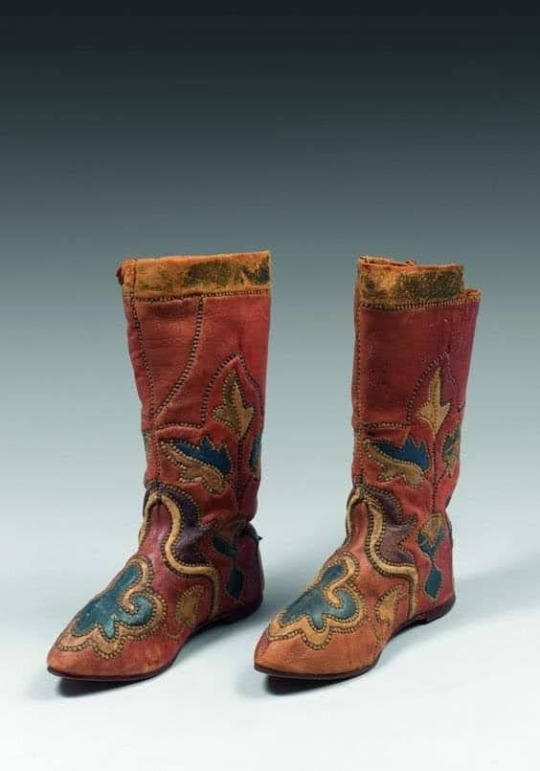
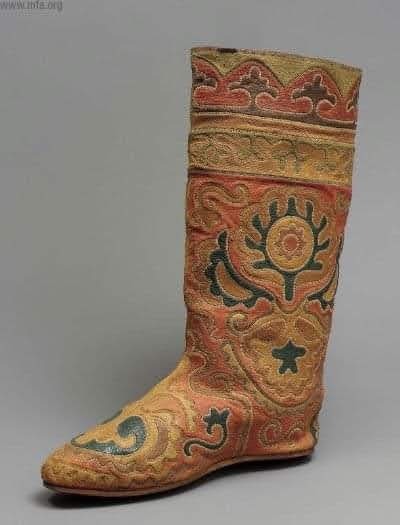
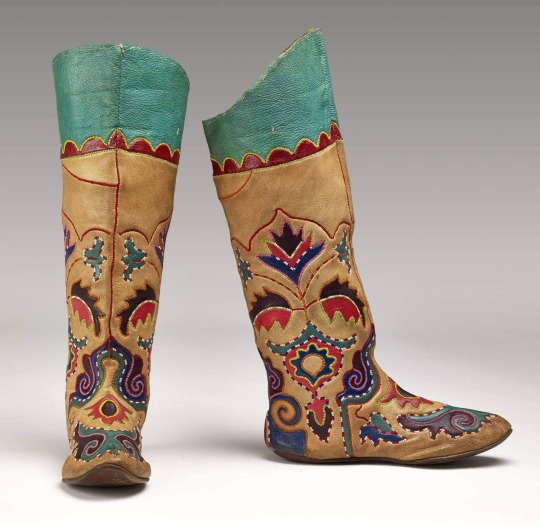
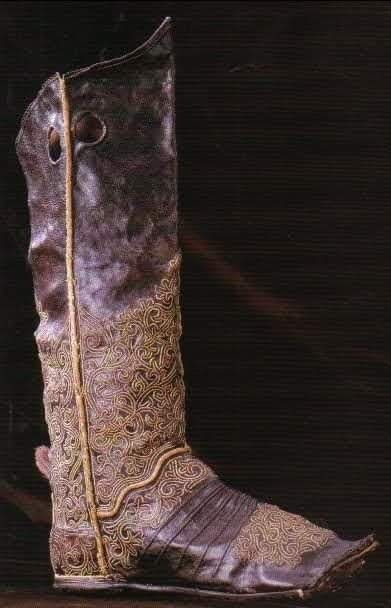
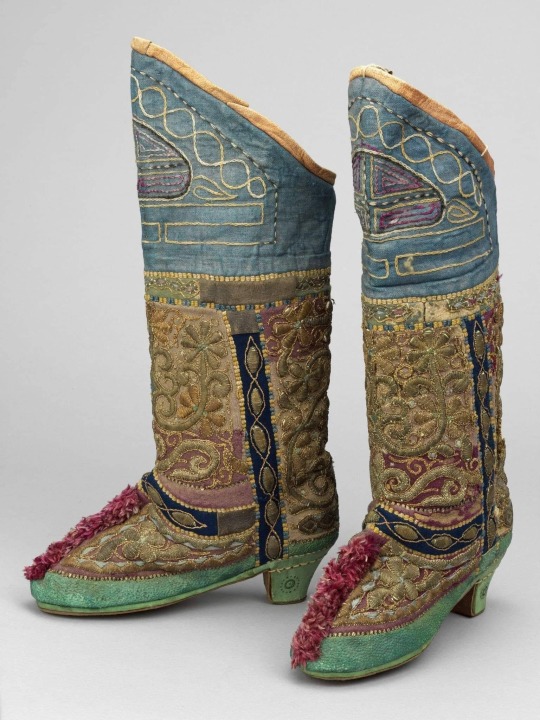


D'Artagnan.
"Traditional embellished boots from two different cultures ,the Tatars and the people of Yarkand in China These traditional boots date from 16th cent to early 20th century.
#1 Tatar Boots; ca 1925 ; worn by Alicia Markova (1910-2004) as a Polotsvian maiden in Mikhail Fokine's ballet Prince Igor .Markova was only 14 when she joined the Ballet Russe in 1925 © Victoria and Albert Museum, London
#2 Pair of boots, most likely worn by women from the city of Yarkand (also known as Shache in Chinese) at festive occasions. Made of leather with purple and brown woollen felt appliqué with elaborately embroidered and heavily couched floral motifs in a combination of silk, metal, gold and woollen threads on its upper and its cuff, with a blue-painted hemp layered at the top of the pitched cuff. The front vamp is decorated with magenta-dyed cotton/woollen ends, made in chagrin (or shagreen) between its upper and wooden sole and 4cm-high heel painted with decorative marks, and layered with leather at the bottom. Ca 1873 Height: 42cmLength: 23.5cm Width: 9cm © V&A. Museum
#3. Pair of boots, most likely worn by women from the city of Yarkand (also known as Shache in Chinese) at festive occasions. Made of leather lined with bright red and green woollen felt appliqué with elaborate floral motifs embroidered or couched in a combination of silk, metal, gold and woollen threads on its upper and its cuff, with a blue-painted hemp layered at the top of the cuff, a front vamp lined with magenta cotton/woollen ends, and edged with chagrin (or shagreen) between its upper and wooden sole and 4cm-high heel which is layered with leather at the bottom. Height: 43cm
Length: 23cm Width: 8.5cm ca 1873 © V&A Museum
#4 Pair of Tartar boots dated to 1582, in the Livrustkammaren museum in Stockholm, Sweden. Embroidered all over with a 4 layer leather stacked heel. The picture comes from June Swann's "History of Footwear in Norway, Sweden and Finland. Prehistory to 1950," Originally, this boot is thought to have been a present from the Khan of the Crimean Tartars during his visit to the Stockholm at the end of the century..
#5 Boots from Kazakhstan in the early 1900s Made for men and women these soft, light, indoor boots (ichigi or masi) have thin, flat soles. hey are decorated with brightly coloured leather appliqué patterns that evoke the natural world such as beetles, rams’ horns and cat faces. Leather overshoes were worn over these boots to protect them from the dirt and moisture outside © British Museum
#6. Boot 19th century Ukraine, possibly Crimea, Tartar (Tatar) peoples Pieced, dyed and embroidered leather Height x width: 14 9/16 x 3 1/8 in., 33 cm (37 x 8 cm, 13 in.) © MFA Boston
#7. Pair of Kazakh women's boots in orange-brown leather with applications of pieces of dyed leather in blue, brown and beige representing floral motifs - Republic of Kazakhstan - Central Asia
H.: 25 cm
Visible restorations.© Drouot Richelieu
#8. Woman’s boots, Yarkand, Xinjiang (China), mid 19th century. Leather, cotton, silk, height: 40 cm. Robert Shaw Collection, Ethnological Museum© Ethnological Museum SMB. Photo: Claudia Obrocki
~~~ooo~~~~
Yarkand
In the western outskirt of the Takla-Makan Desert, in the Yarkand River water gap there lies Yarkand one of the ancient cities on the southern branch of the Great Silk Road. Yarkand city, or Shache in Chinese, is one of the largest cities of Xinjiang-Uygur Autonomous region of China. The city sprang up in the Ist millennium BC as a transhipment place for caravans, moving along the Great Silk Road, and is considered one of the main trade centres of Eastern Turkestan. Late in the Ist century AD, the city was occupied and annexed to China by Han troops and its importance diminished .Then later, under the Tang dynasty Yarkand once again became a strategically important point on the Silk Road.
~~~ooo~~~
Tatar boots (also Kazan boots, ichigi, chiteck) that date centuries back can be found in the collections of many prominent museums. There, the boots are labelled as originated from Kazakhstan, Uzbekistan, Crimea, Russia, Indonesia, Ukraine, Georgia, Asia, Europe; in accordance with the area from which they came. The labels do not always accurately credit the authorship of the unique craftsmanship and technique of this kind of exquisite leatherwork. The boots were created using a unique leather mosaic technique developed and mastered by Volga (Kazan) Tat people.
The Tatars is an umbrella term for different Turkic ethnic groups bearing the name "Tatar".Initially, the ethnonym Tatar possibly referred to the Tatar confederation; which was eventually incorporated into the Mongol Empire when Genghis Khan unified the various steppe tribes. Historically, the term Tatars (or Tartars) was applied to anyone originating from the vast Northern and Central Asian landmass then known as Tartary, a term which was also associated with the Mongol Empire itself. Recently the term now refers to related ethnic groups who refer to themselves as Tatars or who speak languages that are commonly referred to as Tatar, namelyVolga Tatars (Tatars proper), Crimean Tatars and Siberian Tatars.
Love D'Artagnan xxx".
16 notes
·
View notes
Text
can't believe takla makan is the name of an african desert.......
19 notes
·
View notes
Photo

The Beauty of Xiaohe (ca. 1800 – 1500 BCE) is extremely well preserved. Her body was found wrapped in a wide woolen cloak. It is one of 200 mummies found in the Takla Makan Desert of the Tarim Basin, China. The people believed that once you entered the desert there was no way out. https://www.instagram.com/p/B8iw1XtlSga/?igshid=143zcfnmvh82r
75 notes
·
View notes
Quote
All the arguments that have been made for the colonization of Mars can be made with even more force for the colonization of central Antarctica. Compared to Mars, Antarctica is practically a tropical paradise: the climate’s significantly warmer, water and oxygen are much easier to come by, there’s a planetary magnetic field screening out most of the Sun’s dangerous radiation, mineral resources are at least as abundant, the soil’s not saturated with toxic perchlorates, getting there is easy with existing technology, and if something goes wrong, help can get there in a day or two—it’s not nine long and silent months away if Earth and Mars happen to be in the right orbital configuration just then, and anything up to twice that if you’re not so lucky. You can make equally sound arguments why colonizing the top of Mount Everest, the bottom of the Marianas Trench, the waterless and windswept Takla Makan desert of central Asia, or just about any other environment on Earth makes more sense than colonizing Mars. All of them are better suited to human habitation than Mars, and Mars is better suited to human habitation than any other body in the solar system other than Earth. Why aren’t colonists signing up to colonize Antarctica, then? Because the colonization of Antarctica isn’t part of the Monofuture, and so most people can do the math and figure out that an Antarctic colony makes no sense.
Ecosophia: The Twilight of the Monofuture
7 notes
·
View notes
Text
Crush ke?
Kisah harini.Aku memang looking forward tarikh hari ini sebab aku ada alasan untuk jumpa someone.Idk how to describe this feeling,dia macam gedik2 butterfly in the stomach gitu.🤣
Masa mak dia datang rumah bagi kad haritu,aku ingatkan kenduri dia weh.Rasa macam nak luruh jantung,rupa2 nya kakak/adik dia and sejak dari tu aku memang cop tarikh tu nak pi rumah dia.Selama ni boleh intai kat masjid je.haha.Ni pi rumah terus la.
Pastu,dalam pkul 12tghri td buat2 tanye abah "bah ada kenduri tak harini,kat mana?"
"Haah,banyak jugak.Rumah Cikgu Rusdi tu satu(ayah dia),jomla". Tanya abah sambil lewa tanpa expect yang aku nak ikut.
"NAK IKUT!!!" aku cakap kuat2.Terkejut seh abah sebab selama ni memang takla aku saja2 nak ikut abah pegi kenduri kawan2 dia tapi abah tak tahu aku ada motif lain.Hahaha.Sori bah.
Abah janji lepas zohor aku kebetulan mandi awal harini sebab ada tetamu pagi kalau tak memang zohor la aku mandi.Solat cepat2 dan siap cepat2.Aku siap biasa2 je tak beria sangat nanti pelik mak ayah aku.haha.Aku jarang pakai baju kurung,last pakai time raya puasa haritu and kalau ada event penting jela.
Panjang lagi cerita ni tapi nak cerita jugak sebab kisah ni nubhan je tahu.haha.Tapi she's too busy to reply my wassup so aku ranting sni.Tatau nak bergossip dengan sapa.Sini je boleh menggedik sebab aku bukan insan yang biasa menggedik sebenarnya.🤗
So,aku dah siap awal2 semua ni aku keluar bilik tengok abah baring pakai kain pelikat lagi depan tv.Aduhh😓.Kita dah semangat siap ni,tapi takpe sebab abah siap cepat tengok2 mama cakap dia nak ikut.Haru lagi kene tunggu.hahahaa.Aku ni taknakla nampak macam over semangat sangat kan memang obviousla pulak hidden motif aku ni.So ak rilek2 mai fon tunggu.Dalam jam 2.30 kitorang gerak,dekat je rumah pon.5 mnit halah halah bunyi macam jauh.☺️☺️
Sampai!Laju je bukak pintu kereta masuk pintu pagar rumah dia.Aku buat2 tak obvious mata melilau cari dia.Takde pon!🙄Konfirm duk belakang rumah ni buat kerja,kacau gulai ke apa kan.Orang rajin memang camtu.hahaha.
Then,aku usha2 lauk kebetulan tengah lapar jugak memang aku tak ingat apa dah. aku nampak la dia dari jauh,(pakai tshirt merah seluar track) dan dia pon pandang aku.Ibarar kata mata bertentang mata lantas aku cepat2 menundukkan pandangan.haha.Weh drama nya.Pastu aku rilek2 jangan cuak pi amek lauk.Then know what?
Lauk gulai habis?Aku buat muka macam ☹️☹️☹️Sebab second motif aku datang memang nak makan daging gulai.hahaha.
Tiba-tiba..
Datanglah dia betul2 depan aku bawak bekas gulai refill and tanya "ada lagi tak gulai daging,eh habis dah eh ada je ni lagi jangan risau"
Aku macam errr...😶😶Kaku jap.Camna dia tau aku nak gulai ni.hahaha.Tapi still buat rilek jangan gabra.hahaha.Takyah perasan boleh tak,dia refill sebab dah habis laa.hahaha.
Tapi gulai sedap.Ada teh ais sedap eh asal semua sedap ni?Aku makan sampai kenyang takde nak cover2,sambil intai2 dia buat kerja.Aku tau dia memang rajin,dari 2012 aku kenal dia memang rajin orangnya.Mama aku pon asyik sebut je nama dia sambil jeling2 kat aku.Tataula apa maksud jelingan mama tu.
The question is,aku sebemarnya tengah crush kat dia ke?haha.Aku dah tak ingat perasaan ada crush ni sebab last aku ada crush masa darjah 6,lama gila kan?Dan lepas tu aku memang tak pernah ada crush sampailah raya haritu.Tataulah kenapa aku happy semacam kalau jumpa dia,dulu takdela macam ni.Harini gembira dia lain macam.Panjang sangat dah story ni,i should stop tapi sebenarnya ada kisah lain kat kenduri lain lepas rumah dia tu.Tapi tak nak ceritalah,tak menarik.
Thats all for today.Tidur lena la malam ni sambil senyum.haha.Bai.
8 notes
·
View notes
Text
3. Hotan (Cotan/Khotan)
Based on Britannica (2010), Hotan is an oasis city in the southwestern Uyghur Autonomous Region in Xinjiang, far west of China. Hotan forms a county-level city and is the administrative center of Hotan, which administers several counties based on the oasis along the southern edge of the Takla Makan Desert. The largest of them, Hotan Oasis, includes Karakax (Moyu) in the northwest and Luopu (Lop) in the east. Those many rivers like the Karakax irrigate the oasis; these rivers flow from the high Mountains in the south, joining the oasis's north to form the Hotan (Khotan) River. The rivers have their most excellent flow in summer and are almost dry for most of the year. Hotan, during the Han Dynasty, was encountered by China. The explores Zhang Qian served as a representative to the western region, and later, Hotan was conquered during the Dong Han expeditions on the first century. In this initial period, the area was inhabited by Aryan people who spoke an Indo-European language, and the cultures of northern India and Afghanistan strongly influenced them. In 1219, the Mongols conquer Hotan. By the 8th century, it was renowned in China for its textiles and refinement. Marco Polo visited in 1274, highlighting its role as a trade hub and its prosperous cotton industry. Their kingdom was an important post on the Silk Road from China to the West (via the Pamirs) and India. According to Rong Xinjiang (2015), It was an important trading center and one of the most important places when Buddhism reached northern China. The Chinese retook Hotan when the expansionist policies of the Tang Dynasty (618–907) led Chinese armies into the Tarim Basin in the 630s.

Ruins of the Melikawat monastery, near Hotan, Uygur Autonomous Region of Xinjiang, China.
0 notes
Photo


Flashcards
On September 17, 2019 we presented to the class our individual flashcards. In our class we have different topics. My topic is all about the Different kinds of Desert in the world, which is the Sahara, Gibi, Libyan, Rub Al Khali, Kalahari, Great Sandy, Great Victoria, Chihuahuan, and Takla Makan.
1 note
·
View note